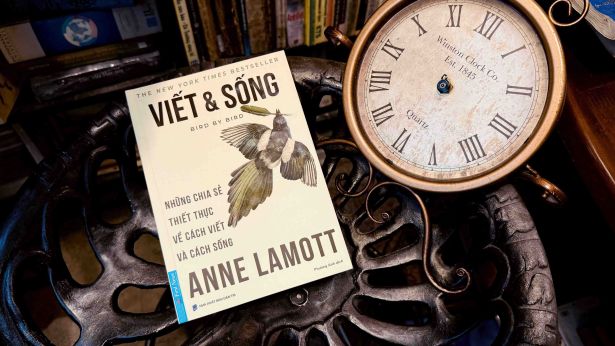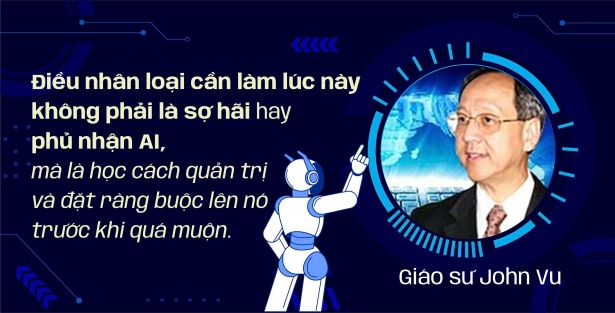 13 Jan, 2021
13 Jan, 2021
Sao Hoả: Sắp xong
Trong hơn sáu năm, Chương trình máy thám hiểm sao Hoả của NASA đã điều tra cảnh quan sao Hoả dưới sự hướng dẫn của các nhà khoa học của NASA. Năm nay, lần đầu tiên, máy thám hiểm Rover tự quyết định đi vòng quanh sao Hoả. Điều này là có thể bởi vì phần mềm “Trí tuệ nhân tạo” do sinh viên ở Carnegie Mellon tạo ra cho phép robot làm mọi thứ theo cách riêng của nó.
“Chúng tôi thực sự sung sướng với kết quả này,” David Thompson nói, một sinh viên tốt nghiệp tại Carnegie Mellon và bây giờ làm việc như nghiên cứu viên tại NASA. Với Thompson, người có được bằng tiến sĩ Ph.D. về robotics tại Carnegie Mellon năm 2008, thực nghiệm này là phần thưởng. Nó cũng làm nhớ lại thời gian anh ấy dành ra trong miền sa mạc của California cùng với máy chạy bằng năng lượng mặt trời có tên Zoë, được phát triển để tự nó ra quyết định. Trong thực nghiệm hiện trường được chỉ đạo bởi David Wettergreen, một giáo sư tại Viện Robotics của Carnegie Mellon, Zoë tự động tìm thấy dấu hiệu sự sống ở sa mạc Atacama năm 2004 và 2005 và vẽ bản đồ địa lí riêng của nó cho một vùng gần Amboy Crater ở sa mạc Mojave của California năm 2007.
Thực nghiệm Amboy Crater, chủ đề của luận án tiến sĩ của Thompson, đã chứng tỏ khả năng tương tự như điều bây giờ được tổ hợp vào trong phần mềm trí tuệ nhân tạo mới của Rover. Hệ thống đó bây giờ được gọi là Thám hiểm tự trị cho khoa học thu thập tăng lên Autonomous Exploration for Gathering Increased Science, hay AEGIS — dựa trên công trình hơn chục năm tại Carnegie Mellon. Ngày nay, phần lớn các phần mềm tiên tiến đều có chứa các nghiên cứu “Trí tuệ nhân tạo” và nghiên cứu về “Robotics” đang được dạy và tiến hành tại Carnegie Mellon nơi mỗi năm, chỉ vài trăm sinh viên phần mềm hàng đầu được chọn lựa vào trường danh tiếng này.
Tham gia NASA năm 2008 sau khi nhận bằng Ph.D. đã tình cờ chứng minh, bản thân David Thompson làm việc trên dự án AEGIS. “Đó là chuyển dịch không ngừng từ điều tôi đã làm tại CMU,” anh ta nói thêm.
Tuổi thọ không ngờ của Rover và người em sinh đôi của nó, Spirit, đã làm cho NASA có khả năng tổ hợp một số tiến bộ vào tự quản robotic, điều đã được thực hiện kể từ khi chúng hạ xuống sao Hoả. Năm 2007, chẳng hạn, phần mềm dẫn lái do Carnegie Mellon phát triển đã được nạp lên máy thám hiểm, cho chúng khả năng vận động vòng quanh chướng ngại một cách tự quản. Bằng việc cho phép máy thám hiểm Rover ra quyết định về quan sát, AEGIS sẽ tạo khả năng cho máy thám hiểm thu thập nhiều dữ liệu hơn có thể có trước đây. Trong quá khứ, máy thám hiểm sẽ lái tới một chỗ được chỉ định, chụp ảnh bằng máy chụp dẫn lái góc rộng và truyền hình ảnh về trái đất; các nhà khoa học NASA tiếp đó kiểm tra các mục tiêu quan tâm để xem xét vào ngày sau đó. Đôi khi, ràng buộc về thời gian và khối lượng dữ liệu có nghĩa là tổ máy thám hiểm sẽ di chuyển máy thám hiểm đi trước khi mục tiêu được nhận diện hay trước khi xem xét các mục tiêu không có ưu tiên cao.
Bây giờ, máy thám hiểm Rover có thể dùng phần mềm tại điểm dừng cùng với dẫn lái trong một ngày, hay vào cuối ngày lái. Dùng các tiêu chí được khoa học gia NASA thiết lập, máy thám hiểm có thể nhận diện và xem xét các mục tiêu đáng quan tâm mà nếu không có chúng có thể bị bỏ qua.

—-English version—-
Blog234- Mars: Up Close
For more than six years, NASA’s Mars Exploration Rover has surveyed Martian landscape under the guidance of NASA’s scientists. This year, for the first time, the rover decided on its own to travel around Mars. This is possible because of the “Artificial Intelligence” software created by students in Carnegie Mellon to allow the robot to do thing on its own.
“We were really happy with the result,” said David Thompson, a Carnegie Mellon graduate and now work as a researcher at NASA’s. For Thompson, who earned his Ph.D. in robotics at Carnegie Mellon in 2008, the experiment was gratifying. It also was reminiscent of time he spent in the deserts of California with another solar-powered rover called Zoë, which was developed to make decisions on its own. In field experiments directed by David Wettergreen, a professor in Carnegie Mellon’s Robotics Institute, Zoë autonomously found signs of life in the Atacama Desert in 2004 and 2005 and drew its own geological maps of an area near Amboy Crater in California’s Mojave Desert in 2007.
The Amboy Crater experiment, the subject of Thompson’s doctoral thesis, demonstrated capabilities similar to what is now incorporated into the Rover’s new artificial intelligence software. That system is now called Autonomous Exploration for Gathering Increased Science, or AEGIS — is based on more than a decade of work at Carnegie Mellon. Today, most of the advanced software including “Artificial intelligence” and “Robotics” researches are being taught and conducted at Carnegie Mellon where each year, only few hundred of top software students are selected to enter this prestigious school.
Joining NASA in 2008 after receiving his Ph.D. proved fortuitous, as David Thompson found himself working on the AEGIS project. “It was a very seamless transition from what I was doing at CMU,” he added.
The unexpected longevity of Rover and its twin, Spirit, has enabled NASA to incorporate a number of advances in robotic autonomy that have been made since they landed on Mars. In 2007, for instance, navigation software developed by Carnegie Mellon was uploaded to the rovers, giving them the ability to maneuver around obstacles autonomously. By allowing Rover to make some decisions about observations, AEGIS will enable the rover to gather more data than previously possible. In the past, a rover would drive to a designated spot, take images with its wide-angle navigation camera and transmit the images to Earth; NASA scientists would then check for targets of interest to examine on a later day. Sometimes, time and data-volume constraints meant that the rover team would move the rover before a target was identified or before examining targets that didn’t have a high priority.
Now, Rover can use the software at stopping points along a single day’s drive, or at the end of the day’s drive. Using criteria established by NASA scientist, the rover can identify and examine targets of interest that would otherwise be missed




 Thông báo
Thông báo














 Quay lại đăng nhập
Quay lại đăng nhập
